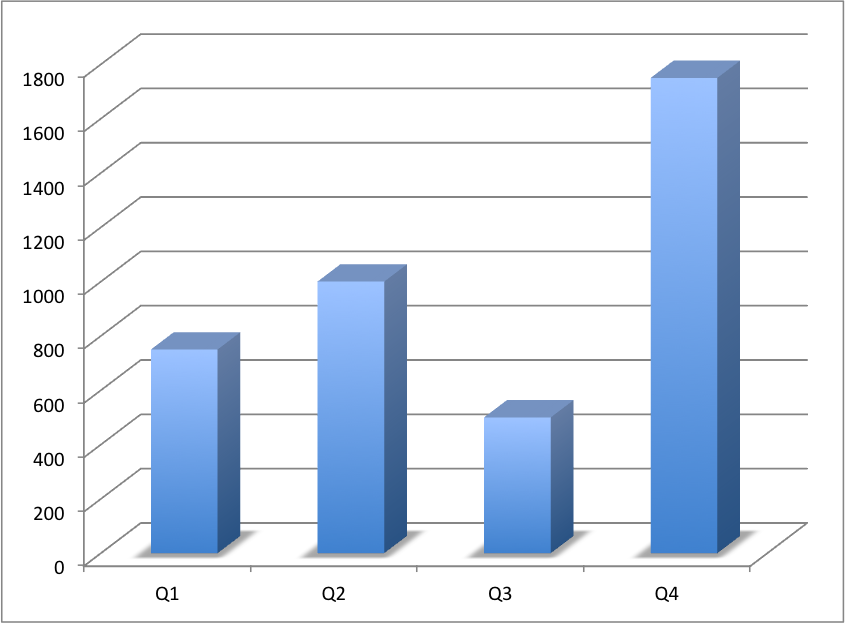Ready for 2015? – The Revenue Budget Challenge
 Reading time for this post is less than six minutes
Reading time for this post is less than six minutes
If you have done the alignment & identification check recommended in the first Ready for 2015 post, you have also ranked these 6 sources of economic growth:
- Revenue growth in new markets (A)
- Revenue growth from new customers (B)
- Revenue growth from new products (C)
- Revenue growths from existing customers (D)
- Optimise asset utilization (E)
- Reduce the cost base (F)
Few growing software companies are concerned about E and F (they should be! More about that later). Most are working in a scenario where the lion’s share of the revenue will come from a combination of A and B, which also implies C (if you are taking your current product to new customers in a new market – internationalization – these customers will consider you and your product new also = C).

Let’s imagine that a large portion of your 2014 revenue is going to come from A, B and “C”. How are you going to make an ambitious yet realistic revenue budget?
Let’s also assume that you need some of the gross margin earned in 1H to fund the revenue generation in 2H.
Let’s assume you expect to make a revenue of 2.000 in 2014 and this is 100% more than in 2013. You want to make 4.000 in 2015. You will probably come out of Q4/2014 with 875 so you are a little cautious for Q1/2015. Q1 is always slower than Q4. Q2 is usually picking up before the holidays. Q3 is a nightmare (in Europe). From end of June to mid September people are on [slider title=”holiday.”] Those who are not have plenty of time = good time for prospecting! [/slider]. Q4 is hectic, but short (because December is Christmas time).
Your revenue budget will look something like this (the famous hockey stick).
You risk being exposed to the illusion of the perspective: The challenges look smaller when they are far away!
Is the main portion of the Q4 target supposed to come from the A-B-C combination?
The revenue model
Before you make the final “save” to a budget with a hockey stick revenue profile you must verify the feasibility against a revenue model. A revenue model is a realistic replication of your sales process portion of your value chain – typically in a spreadsheet. It is based on the fundamental metrics of how much time (man and calendar) each step of the marketing/sales/implementation process requires, the size of the average order and your hit rate. The revenue model will calculate the sales and cash you can “produce” with the resources you have available. Provided the new markets and the new customers behave like the current customers!

The value chain in the software industry
Do not forget to add the learning curve if some of the revenue is going to be produced by independent channel partners or staff that you have not hired yet.
You may also want to be more conservative with your revenue model if you are applying it to A-B-C situations, where your knowledge about the new market and the new customers is limited or non-existing.
Improving the process
Now let’s assume that we want market penetration in 2015 to be more productive, thus improving the probability of achieving the 2.000 in Q4. What should we change to make this happen? Order size? Volume of leads? Sharper market segmentation? Sales tools? Shorter sales cycles? (how?), Sales skills? Changes in implementation? Changes in the products?
In order to justify that we can produce more with less we must be able to explain the cause-effect relationships, explain how we will implement the changes, the investment required, the critical success factors of the undertaking and KPI’s telling us if we are achieving the improvements we expected.
Be careful with changing the revenue budget spreadsheet anticipating that things will improve by themselves! Doing so is playing on the “Luck” factor. It’s like playing in the lottery. You may win, but the probability is very, very small.
Other posts in this “Ready for 2015? – series:
Ready for 2015? Get aligned first
Ready for 2015? Why you should perform a business model check
Ready for 2015? Why you shouldn’t bet the farm








